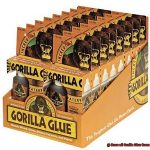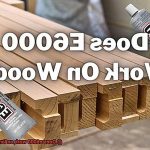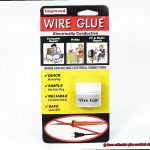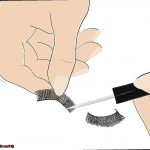If you’ve ever found yourself pondering whether this versatile adhesive can work wonders on your rubber projects, you’re in for a treat. E6000 has earned quite a reputation for its impressive bonding abilities across various surfaces, but what about rubber?
Can it conquer the challenges of sticking rubber materials together with the same gusto? Fear not, my friend.
So, buckle up and prepare to be amazed by the enchanting powers of E6000 on rubber.

What is E6000?
Contents
When it comes to crafting, repairing, or creating, finding an adhesive that can withstand the test of time and bond a variety of materials is essential. Look no further than E6000, the high-performance adhesive that has become a favorite among DIY enthusiasts, crafters, and professionals alike.
In this comprehensive guide, we will explore the properties, benefits, and uses of E6000, with a particular focus on its effectiveness when bonding rubber materials.
The Power of E6000:
E6000 is more than just your average glue. This adhesive is renowned for its versatility and strength, making it a go-to choice for countless projects. Its unique formula allows it to bond various materials with ease, including rubber, metal, wood, glass, fabric, and ceramic. Whether you’re creating jewelry with rubber elements or repairing shoes with rubber soles, E6000 provides a reliable and long-lasting bond.
Properties that Set it Apart:
E6000’s secret lies in its exceptional properties. Firstly, this clear adhesive dries to a flexible finish, ensuring that your bonded surfaces retain their ability to stretch or bend without compromising the bond. Its thick consistency allows for easy application without any dripping or running. This feature is especially important when bonding rubber as it ensures proper adhesion without damaging or distorting the surface.
Strength that Endures:
One of the hallmarks of E6000 is its remarkable bonding strength. Once cured, it forms a tough and durable bond that can withstand harsh conditions and heavy use. It is resistant to water, temperature changes, chemicals, and even UV radiation, making it suitable for both indoor and outdoor applications. Say goodbye to worrying about your projects falling apart.
Tips for Success:
To achieve optimal results when using E6000 on rubber surfaces, proper surface preparation is key. Ensure that the rubber is clean, dry, and free from any dirt, grease, or debris. A light sanding with sandpaper can further enhance the bonding strength. When applying the adhesive, remember to use a thin layer on both surfaces and press them firmly together. Allow the bond to cure for at least 24 hours to achieve maximum strength.
Types of Rubber
Rubber is a versatile material used in various industries, each type with its own unique properties. When it comes to bonding rubber with E6000 glue, it is essential to understand how different rubber types affect the adhesive’s effectiveness.
Here, we will explore the various types of rubber and their impact on the bond strength of E6000 glue.
Natural Rubber:
Natural rubber, derived from the latex sap of rubber trees, boasts exceptional elasticity and tear resistance. It is commonly found in tires, conveyor belts, and seals due to its ability to withstand heavy loads and harsh environments. When using E6000 glue on natural rubber, a strong and durable bond is typically achieved.
Synthetic Rubber:

Synthetic rubbers are laboratory-created alternatives that mimic the properties of natural rubber. Let’s examine a few common types:
- Styrene Butadiene Rubber (SBR): SBR is a sturdy and durable synthetic rubber used extensively in automotive parts like tires, gaskets, and seals. When combined with E6000 glue, it forms a reliable bond that withstands mechanical stress.
- Neoprene: Known for its resistance to oil, heat, and weathering, neoprene acts as a protective shield against the elements. It finds applications in wetsuits, electrical insulation, and automotive components. E6000 glue effectively bonds with neoprene, ensuring a secure connection.
- Nitrile Rubber (NBR): NBR offers excellent resistance to oils and chemicals, making it suitable for fuel hoses, gaskets, and seals. When paired with E6000 glue, NBR forms a robust bond that withstands exposure to various substances.
- Ethylene Propylene Diene Monomer (EPDM): With exceptional weather resistance, EPDM is often used in roofing materials, automotive seals, and hoses. E6000 glue successfully adheres to EPDM, creating a long-lasting bond that endures outdoor conditions.
- Silicone Rubber: Silicone rubber exhibits remarkable heat resistance and is commonly found in medical devices, cookware, and electrical insulation. However, silicone rubber poses a challenge for adhesion due to its low surface energy. While E6000 can provide some adhesion to silicone rubber, it may not be as strong or durable as with other rubber types.
Does E6000 Work on Rubber?
Crafters and DIY enthusiasts alike often struggle to find the ideal adhesive for their rubber projects. E6000, renowned for its strength and versatility, has gained popularity across various applications. But the question remains: does it truly work on rubber? Let’s explore the factors that influence the success of using E6000 on this challenging material.
Understanding the Challenge:
Rubber, a non-porous substance, poses a unique hurdle for E6000. Designed primarily for porous surfaces like fabric, wood, or metal, this adhesive faces a bonding challenge. However, with proper preparation and consideration of different rubber types, successful adhesion can still be achieved.
Factors to Consider:
Rubber Types:
Different rubber types boast varying chemical compositions and surface properties. Whether it’s natural rubber, neoprene rubber, silicone rubber, or synthetic rubbers, they all behave differently when bonding with adhesives. Familiarizing yourself with the specific characteristics of your rubber material will determine whether E6000 is suitable.
Surface Preparation:
To optimize adhesion, thorough cleaning of the rubber surface becomes paramount. Eliminating dirt, dust, grease, or oils before applying the adhesive is crucial. Utilize mild detergent or rubbing alcohol and ensure complete dryness. Additionally, roughening the surface with fine-grit sandpaper or using a primer designed for rubber adhesion can significantly enhance bonding strength.
Application Requirements:
Consider the unique demands of your project. If flexibility, resistance to extreme temperatures, or harsh chemicals are required, E6000 may not be the ultimate choice. In such cases, specialized rubber adhesives formulated for those specific needs should be considered.
Factors to Consider When Using E6000 on Rubber
When it comes to crafting and DIY projects, finding the right adhesive for rubber can be a challenge. However, fear not. Armed with the right knowledge and a tube of E6000, you can achieve a strong and durable bond with rubber. In this article, we will delve into the key factors to consider when using E6000 on rubber, ensuring your creations stand the test of time.
Surface Preparation:
The first step to successful bonding is ensuring that your rubber surface is clean and free from any contaminants. Give it a thorough wipe-down with rubbing alcohol or a mild detergent to remove any dirt, oils, or residues that could hinder the adhesive’s effectiveness. A clean surface provides the ideal foundation for a strong bond.
Compatibility:
Not all rubbers are created equal. Different types of rubber, such as natural rubber, synthetic rubber, silicone rubber, or neoprene rubber, have distinct properties that can affect the adhesive’s performance. To avoid any surprises, test a small area before committing to a larger bonding project. This step will help you determine if E6000 is compatible with your specific type of rubber.
Temperature Resistance:
Rubber is notorious for its sensitivity to temperature changes. Keep in mind that extreme temperatures can cause rubber to expand or contract, potentially compromising the adhesive bond. Check both the rubber material and E6000’s temperature resistance guidelines to ensure they can withstand the environment they’ll be exposed to. By selecting an adhesive and rubber material that can handle the expected temperature range, you’ll ensure a reliable and long-lasting bond.
Flexibility:
Rubber’s flexibility and elasticity are defining characteristics; it stretches, bends, and bounces back without breaking a sweat. Consequently, your adhesive should embrace these qualities and remain flexible over time. Look for an adhesive that can handle the natural movements and stretching of rubber while maintaining its bonding strength. This flexibility will allow your bonded rubber objects to withstand everyday wear and tear without compromising the adhesive.
Curing Time:
Rome wasn’t built in a day, and neither is a strong adhesive bond. E6000 is a contact adhesive that requires sufficient curing time to reach its full strength. Factors such as temperature, humidity, and adhesive thickness can affect the curing process. Follow the manufacturer’s instructions closely, avoid rushing the process, and allow the adhesive to cure fully for optimal bonding. Patience during the curing process will ensure a durable bond that will stand up to whatever challenges come your way.
Application Techniques:
When it comes to applying E6000 on rubber, less is often more. Apply a thin and even layer of adhesive, avoiding excessive squeeze-out that might compromise the bond. Remember, proper contact between the rubber and adhesive is key. Consider using pressure or clamps to ensure maximum contact and a strong bond. By applying the adhesive correctly, you’ll create a bond that is both secure and aesthetically pleasing.
Surface Preparation
Surface preparation is a critical step when it comes to using E6000 adhesive on rubber. Achieving a strong and long-lasting bond requires a clean and properly prepared surface. Any dirt, oil, or contaminants on the rubber can hinder the adhesive’s ability to adhere effectively. So, let’s dive into the importance of surface preparation and the steps involved.
First and foremost, cleaning the rubber surface is paramount. A mild soap and water solution is your best friend here. Grab a soft cloth or sponge and give that rubber a thorough scrub. This will remove any dust or debris that could interfere with the adhesive’s performance. Rinse the rubber thoroughly to eliminate any lingering soap residue.
Once your rubber is squeaky clean, it’s time to dry it off completely. Moisture can be detrimental to the adhesion process, so take your time with this step. Use a clean cloth or allow the rubber to air dry naturally. Patience is key here, my friend.
Now, let’s talk about roughening the surface slightly. This step isn’t always necessary, but it can significantly enhance the bonding strength of the adhesive. Grab some sandpaper or a fine-grit abrasive pad and gently rub it in circular motions across the rubber. This creates tiny grooves that provide more surface area for the glue to grip onto.
After roughening the surface, make sure there are no loose particles or debris left behind. Use a clean cloth or compressed air to blow away any remaining dust. We want that surface to be as clean as a whistle.
Compatibility
Here, we will explore the compatibility between E6000 glue and rubber, uncovering the factors you need to consider for a successful crafting experience. Get ready to discover the secrets behind achieving that strong, long-lasting bond you’ve been dreaming of.
Identifying the Rubber Type:
Rubber comes in various forms, such as natural rubber, neoprene rubber, EPDM rubber, and silicone rubber. Each type has unique characteristics that may influence its compatibility with E6000 glue. Before diving into your project, it’s essential to identify the specific type of rubber you’re working with. This will help determine whether E6000 is the right adhesive for your needs.
Evaluating E6000’s Formulation:
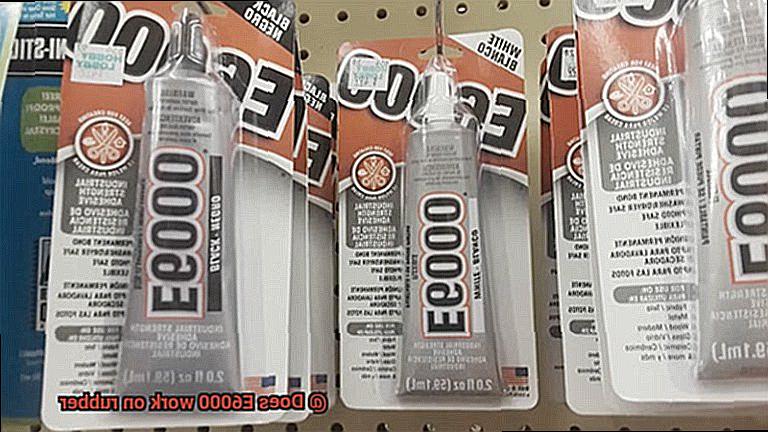
Different brands or versions of E6000 may have slight variations in their composition and chemical properties. To ensure compatibility with your rubber material, refer to the manufacturer’s instructions or product label. These guidelines will provide you with specific recommendations regarding compatibility.
Surface Preparation is Key:
Achieving a strong bond between E6000 glue and rubber requires proper surface preparation. Before applying the adhesive, make sure the rubber surface is clean, dry, and free from any contaminants like dust, oil, or grease. Using a mild detergent or rubbing alcohol can help remove any stubborn residue. For an even stronger bond, consider roughening the surface slightly with sandpaper or an abrasive pad.
The Power of Testing:
To avoid any crafting mishaps, it’s always a good idea to conduct a small test or spot-check before applying E6000 extensively. Apply a small amount of glue on a discreet area of the rubber surface and let it cure according to the manufacturer’s instructions. This test will help you assess the adhesive’s effectiveness and ensure it meets your expectations.
Follow the Manufacturer’s Instructions:
For optimal results, it’s crucial to follow the application instructions provided by the manufacturer. E6000 glue typically requires a curing time of 24 to 72 hours to reach its maximum strength. During this period, avoid any stress or movement on the bonded rubber parts. Patience is key when working with adhesives, so resist the temptation to rush the process.
Application Technique
The versatile and reliable E6000 adhesive is here to save the day. Let’s dive into the application technique of using E6000 on rubber surfaces, ensuring a strong and long-lasting bond for all your rubber-related projects.
Preparation is key. Before applying E6000 to your rubber surface, make sure it is clean, dry, and free from any dust or debris. A quick wipe with a mild detergent or rubbing alcohol will do the trick, removing any oils or contaminants that could affect the adhesive’s performance.
Now it’s time to apply the magic of E6000. Start by applying a thin and even layer directly onto the rubber surface. Use a brush or an applicator tool to spread the adhesive evenly, ensuring complete coverage. Remember, less is more. Avoid applying too much adhesive as it can lead to excess squeeze-out and a messy application.
Once the adhesive is applied, it’s time to bring the rubber surfaces together. Join them immediately and apply firm pressure or use clamps to hold the pieces in place while the adhesive cures. This step is crucial as it promotes maximum contact between the adhesive and the rubber, resulting in a bond that can withstand even the toughest challenges.
Now comes the waiting game. Give the adhesive at least 24 hours to cure before subjecting it to any stress or load. During this curing period, keep the bonded surfaces stationary and undisturbed. Let the adhesive work its magic and achieve its full strength.
It’s important to note that not all types of rubber are compatible with E6000. Certain compositions like silicone rubber or EPDM rubber may not bond reliably with this adhesive. To avoid disappointment, always test the adhesive on a small, inconspicuous area of the rubber surface before applying it to larger areas.
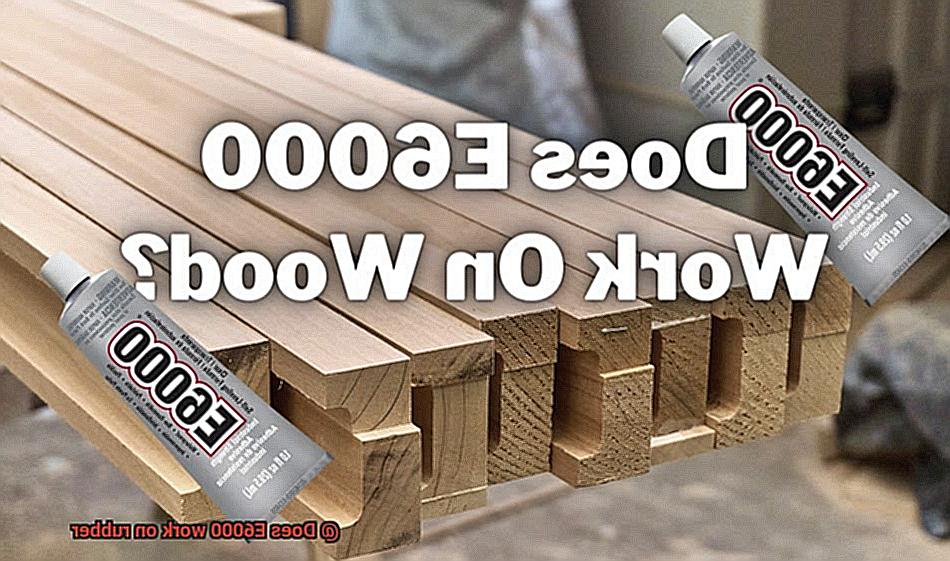
In case of any excess adhesive squeeze-out during application, don’t panic. Simply wipe it away with a clean cloth or scraper before it dries. Once the adhesive is cured, it can be difficult to remove, and any excess can mar the appearance of the bond.
Remember, always follow the manufacturer’s instructions and guidelines for best results. Different rubber compositions and applications may require specific techniques or additional surface preparation steps. With proper surface preparation and careful application, E6000 can work wonders on rubber surfaces, providing you with a strong and long-lasting bond for all your rubber crafting adventures.
Flexibility and Temperature Resistance
Flexibility and temperature resistance are crucial factors when considering the compatibility of adhesives with rubber materials. When it comes to E6000 glue, these qualities shine through, making it a game-changer in the realm of bonding rubber.
One standout feature of E6000 is its exceptional flexibility. Rubber is a material that loves to stretch and move, and E6000 can handle it like a pro. Whether you’re repairing a rubber sole on your favorite pair of shoes or securing a rubber gasket in place, E6000’s flexibility ensures a strong and durable bond. Say goodbye to worries about your project falling apart with every twist and turn.
But that’s not all – temperature resistance is another star quality of E6000. Rubber materials can experience extreme temperatures, from scorching heat to freezing cold. But fear not, because E6000 can handle it all. With a temperature resistance ranging from -40°F to 180°F (-40°C to 82°C), this glue won’t let you down, no matter the climate or application.
Now, how does E6000 compare to other glues on the market? Let’s take a quick look:
- Super Glue: While super glue has its strengths, it can become brittle over time and lacks the same flexibility as E6000. Additionally, it may not hold up as well under extreme temperatures.
- Rubber Cement: Although rubber cement is commonly used for bonding rubber, it falls short in terms of temperature resistance. It may not withstand hot or cold environments as effectively as E6000.
So, if you’re in need of a glue that can tackle the flexibility and temperature challenges of bonding rubber materials, look no further than E6000. Its versatility and reliability make it an essential addition to any DIY toolkit.
However, it is important to note that while E6000 is compatible with most rubber materials, there may be exceptions depending on the specific type of rubber being bonded. To ensure optimal results, it is always advisable to test the adhesive on a small, inconspicuous area first to ensure compatibility and adhesion.
mYvfjEMPl40″ >
Conclusion
In conclusion, E6000 is indeed effective when used on rubber materials.
Its strong adhesive properties create a durable bond that withstands various conditions. Whether you’re repairing shoes, sealing rubber gaskets, or crafting with rubber components, E6000 provides reliable and long-lasting results.
With its professional-grade formula and easy application, this adhesive ensures a secure hold without damaging the rubber surface.


